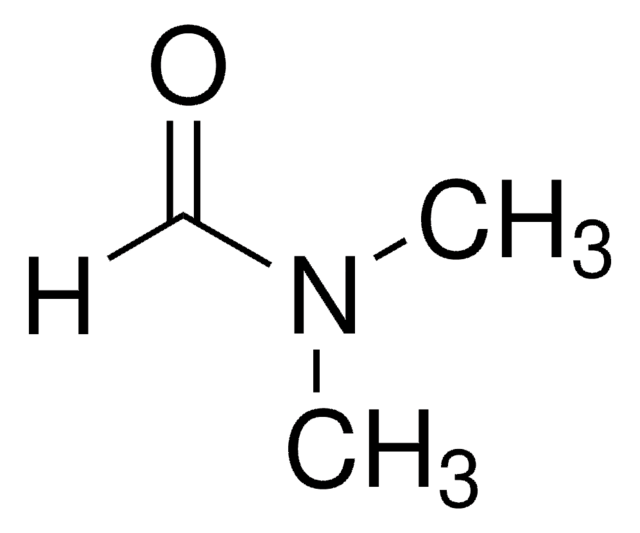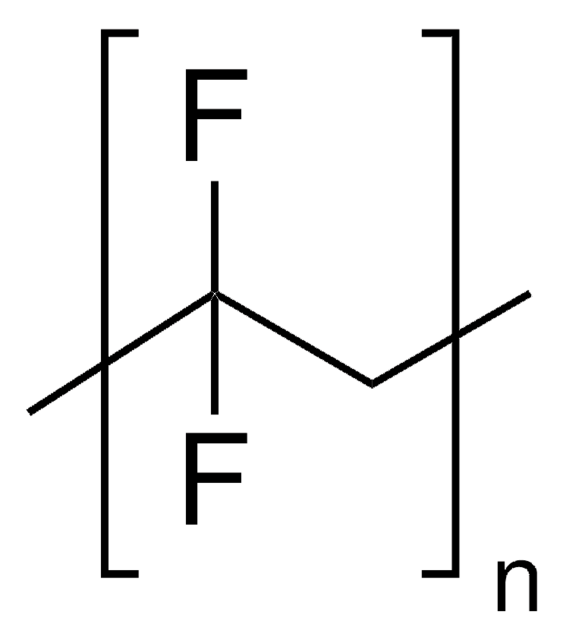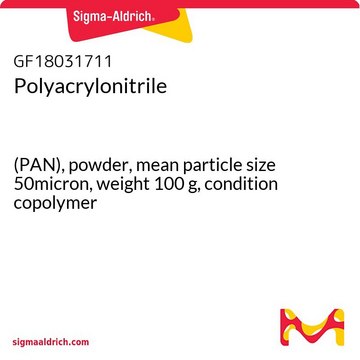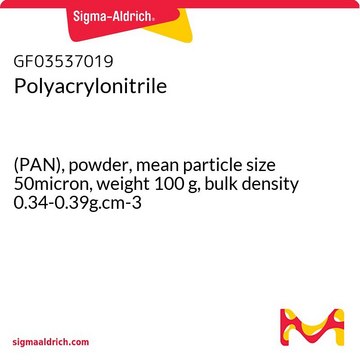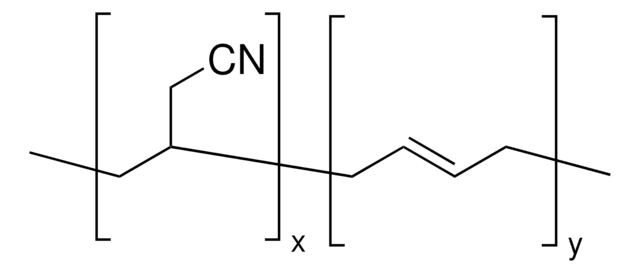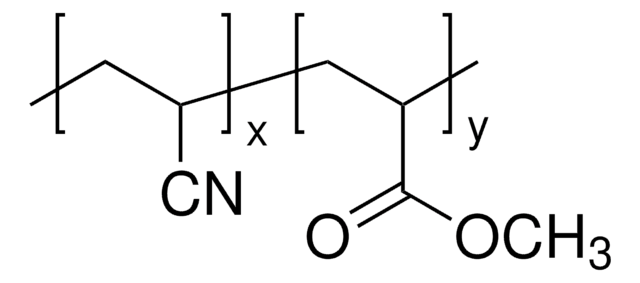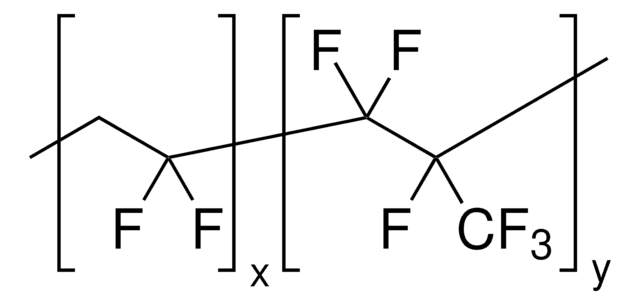181315
Polyacrylonitrile
average Mv 150,000
Synonym(s):
Vinyl cyanide
About This Item
Recommended Products
mol wt
average Mv 150,000
Quality Level
refractive index
n20/D 1.514
transition temp
Tm 317 °C
Tg 85 °C
density
1.184 g/mL at 25 °C (lit.)
SMILES string
C=CC#N
InChI
1S/C3H3N/c1-2-3-4/h2H,1H2
InChI key
NLHHRLWOUZZQLW-UHFFFAOYSA-N
Looking for similar products? Visit Product Comparison Guide
General description
Application
Storage Class Code
11 - Combustible Solids
WGK
WGK 3
Flash Point(F)
Not applicable
Flash Point(C)
Not applicable
Personal Protective Equipment
Choose from one of the most recent versions:
Certificates of Analysis (COA)
Don't see the Right Version?
If you require a particular version, you can look up a specific certificate by the Lot or Batch number.
Already Own This Product?
Find documentation for the products that you have recently purchased in the Document Library.
Which document(s) contains shelf-life or expiration date information for a given product?
If available for a given product, the recommended re-test date or the expiration date can be found on the Certificate of Analysis.
How do I get lot-specific information or a Certificate of Analysis?
The lot specific COA document can be found by entering the lot number above under the "Documents" section.
How do I find price and availability?
There are several ways to find pricing and availability for our products. Once you log onto our website, you will find the price and availability displayed on the product detail page. You can contact any of our Customer Sales and Service offices to receive a quote. USA customers: 1-800-325-3010 or view local office numbers.
What is Product 181315, Polyacrylonitrile, soluble in?
Some common solvents that can be used are DMSO, N,N-dimethylformamide, ethylene carbonate, propylene carbonate, and nitromethane.
What is the degradation temperature of Product 181315, Polyacrylonitrile?
This product has excellent thermal stability below 150°C, but will degrade above this temperature.
Will Product 181315, Polyacrylonitrile, contain acrylonitrile?
The product may contain trace amounts of the monomer acrylonitrile. We do not test for the levels of starting material still present in the final polymer.
What is the Department of Transportation shipping information for this product?
Transportation information can be found in Section 14 of the product's (M)SDS.To access the shipping information for this material, use the link on the product detail page for the product.
My question is not addressed here, how can I contact Technical Service for assistance?
Ask a Scientist here.
Articles
Electrospinning technique applications discussed, emphasizing control of nanofibers and assembly into 3D architectures.
Our team of scientists has experience in all areas of research including Life Science, Material Science, Chemical Synthesis, Chromatography, Analytical and many others.
Contact Technical Service